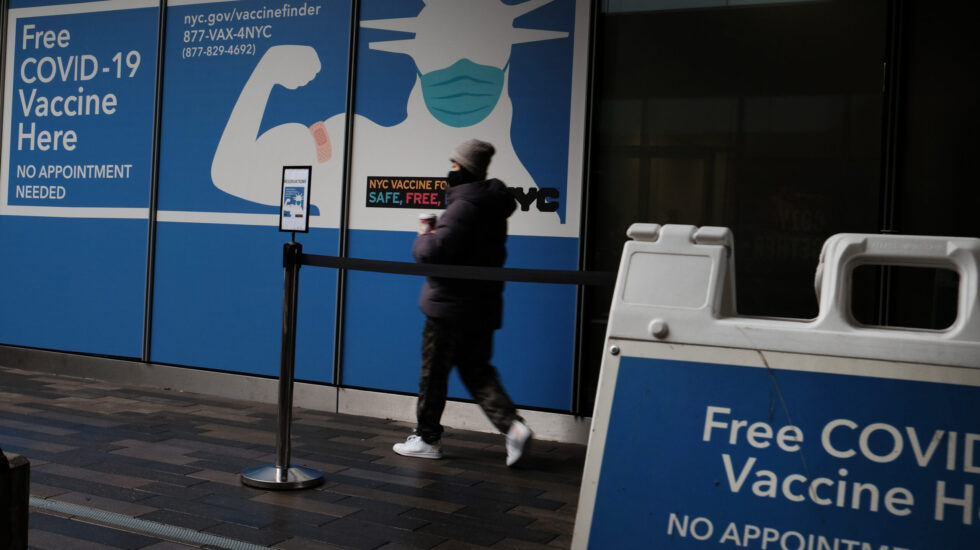America’s declining number of COVID-19 infections hides a disturbing trend: in half of all states, cases are on the rise. And several high-profile Americans, including Speaker of the House Nancy Pelosi and Broadway stars Matthew Broderick and Daniel Craig, have tested positive in recent days.
Overall, deaths, hospitalizations, and sicknesses from the virus have fallen precipitously in the past three months. In mid-January, the nation was averaging over 800,000 new infections every day. By April 7th, that number had fallen to just below 30,000.
During that same time period, deaths fell from approximately 3,300 a day to about 600 a day.
But the Omicron subvariant known as BA.2 – already responsible for over 70% of all new COVID-19 infections in the U.S. – seems poised to generate a new wave. In some places, like New York, an uptick has already begun. The New York Times reports:
The city is registering about 1,500 new cases a day and a positivity rate of nearly 3 percent, both figures more than double what they were a month ago. In Manhattan, where the last wave also first emerged, the positivity rate is above 6 percent in some neighborhoods.
In another potentially worrisome indicator, the prevalence of fevers across the city — which can offer a forewarning of Covid trends — has reached levels last seen at some of the worst points of the pandemic, according to data from internet-connected thermometers.
In Washington D.C., several high-profile infections have raised concerns. POLITICO reports:
Commerce Secretary Gina Raimondo and Attorney General Merrick Garland on Wednesday revealed they had tested positive for Covid-19, becoming the latest D.C. figures to contract the virus in what is taking on signs of a new wave pummeling the capital city.
By Wednesday afternoon, the spread of the virus had gotten further inside the White House and seemingly closer to the president, with Vice President Kamala Harris’ communications director, Jamal Simmons, announcing that he too had become infected. Harris “was in close contact to the Vice President as defined by CDC guidance,” the VP’s office said, adding that Harris would both follow CDC guidelines and “plans to continue with her public schedule.” Simmons had been at a White House event the day before celebrating the passage of the Affordable Care Act. While there, he was seen shaking hands and talking to former President Barack Obama, who recently tested positive for Covid-19. Both were mask-less.
POLITICO adds:
The news of the infections rippled through D.C. Scores of reporters and elected officials have revealed — privately and publicly — in recent days that they have Covid. It’s touched Congress, the White House and major newsrooms. It’s impacted going-away parties and insider gatherings. It’s cast a shadow over the functions of President Joe Biden as well, though the White House says he remains virus-free and has not yet had what is deemed to be a close contact.
Luckily, scientists don’t expect BA.2 to lead to a significant increases in hospitalizations and deaths, and new tools -like antiviral pills – will bolster America’s medical response. NBC News reports:
Despite its spread, health experts see no cause for alarm in the U.S.
That’s because there is no indication the subvariant is more severe than the original omicron strain and because the high level of immunity in the country from vaccines and previous infections is unlikely to make it a major threat.
“I would not be hugely concerned about BA.2,” said Dr. Christopher Murray, a professor of health metrics sciences at the University of Washington and the director of the Institute for Health Metrics and Evaluation.
NBC News adds:
Murray said he is more concerned about the fall, when immunity provided by the second boosters begins to decline, leaving vulnerable groups of people once again susceptible to the virus.
U.S. officials appear to be looking toward the fall, as well: Dr. Peter Marks, the Food and Drug Administration’s top vaccine regulator, suggested last week that the agency could authorize yet another booster shot for vulnerable people later this year.
